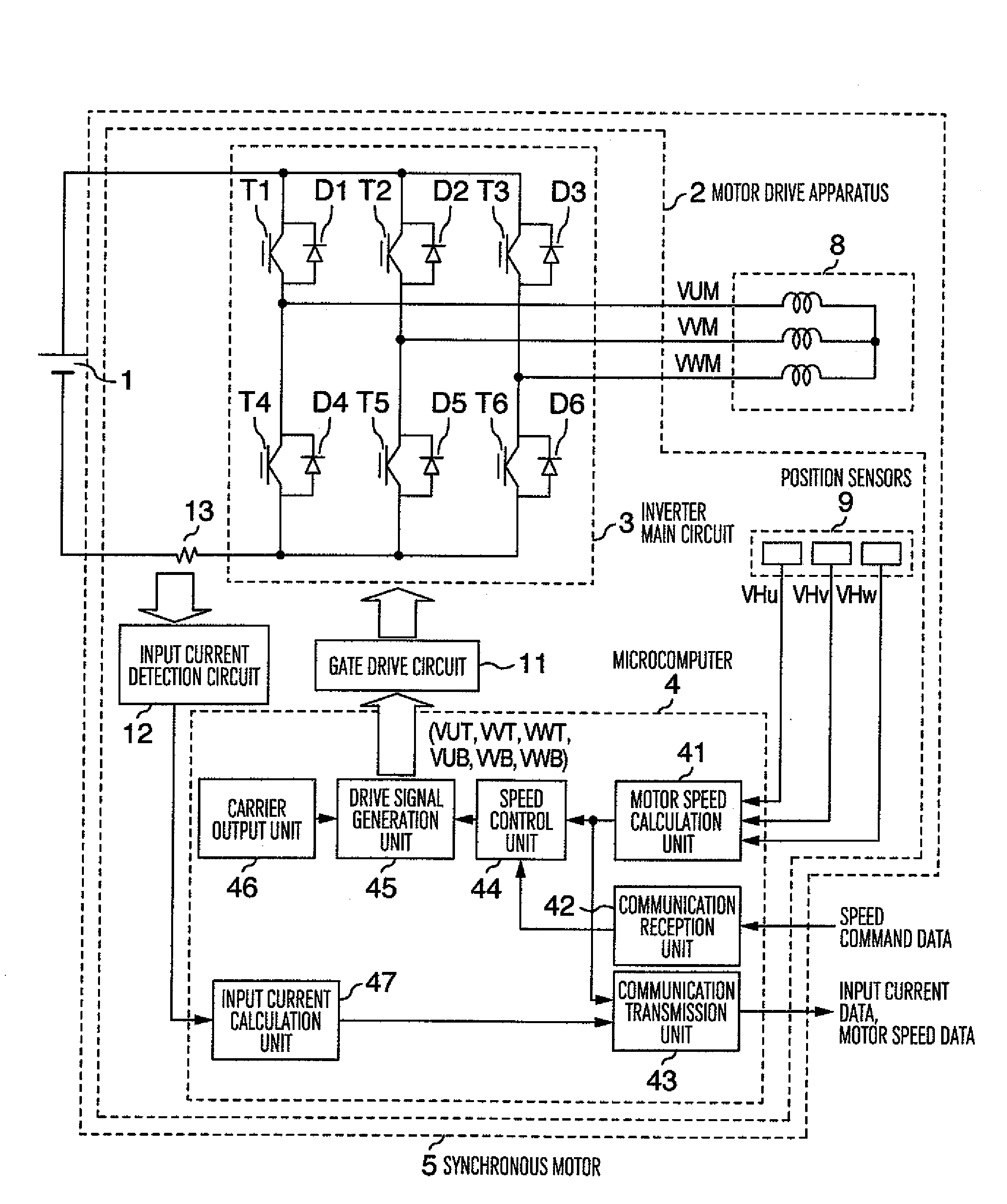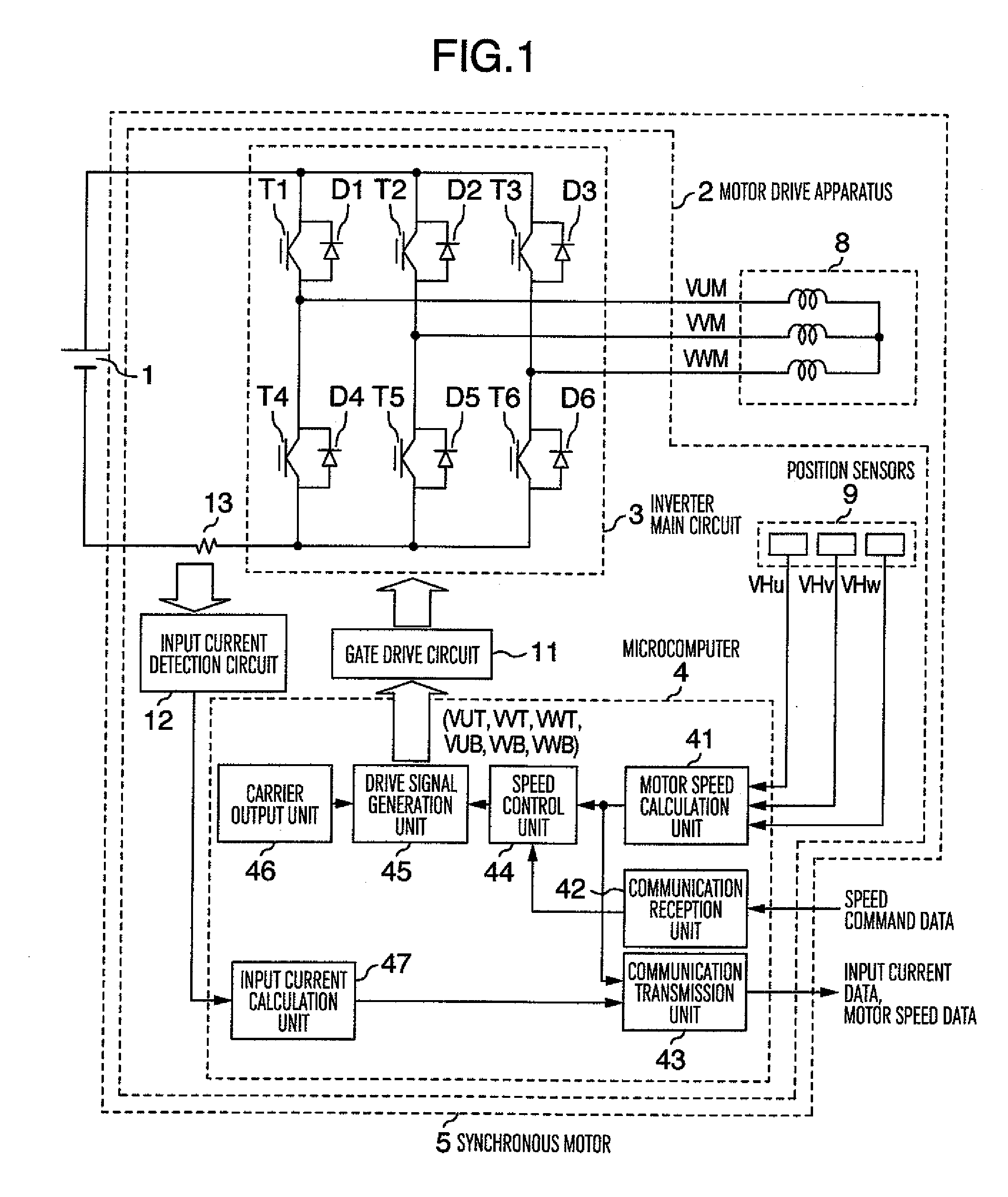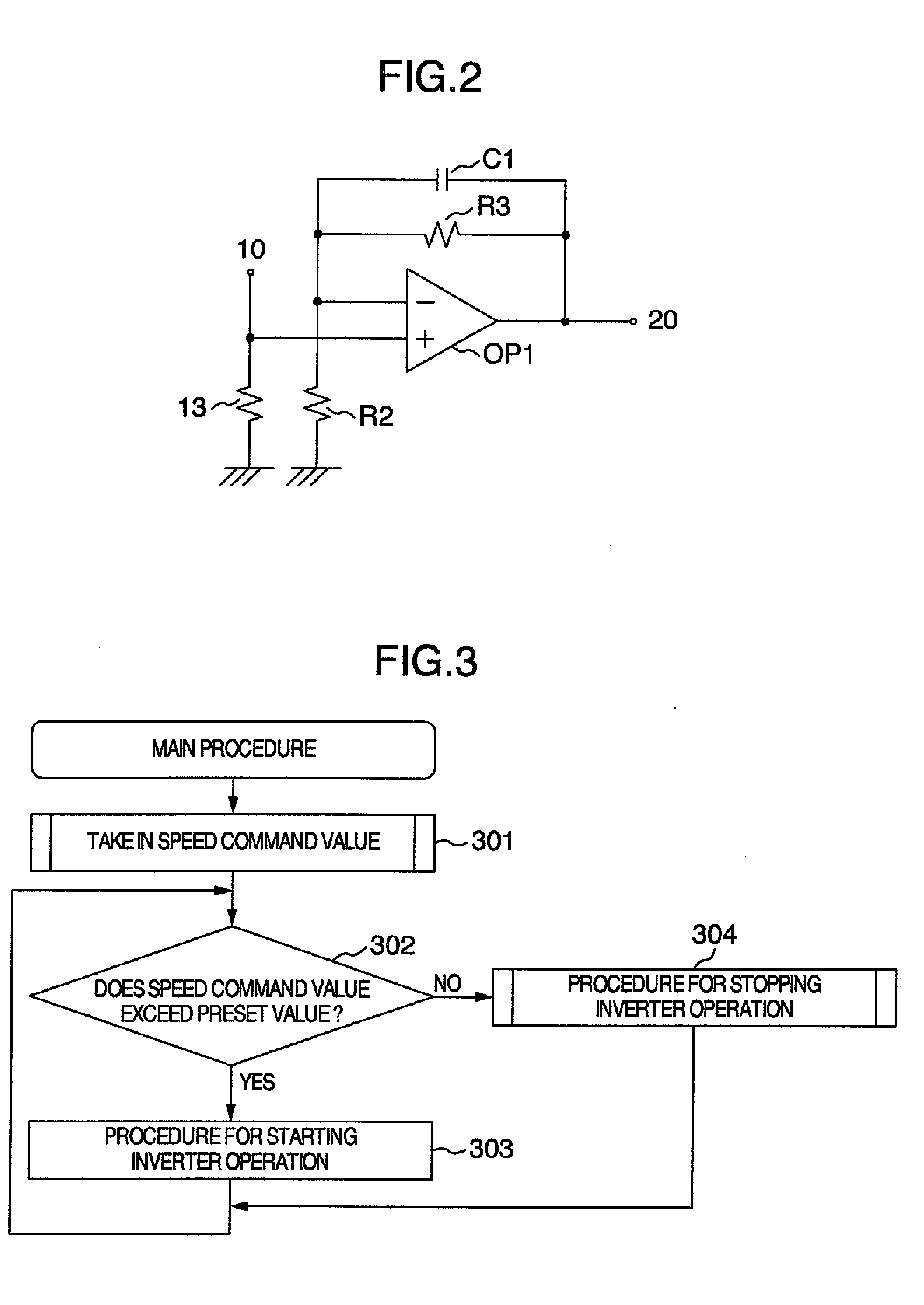Synchronous motor and control method of synchronous motor
a technology of synchronous motors and control methods, applied in the direction of motor/generator/converter stoppers, electronic commutators, dynamo-electric converter control, etc., can solve the problems of inaccurate detection of synchronous motors, inability to achieve desired rotational speeds, and fluctuation of rotational speed of motors, so as to achieve accurate detection and low acoustic noise
- Summary
- Abstract
- Description
- Claims
- Application Information
AI Technical Summary
Benefits of technology
Problems solved by technology
Method used
Image
Examples
embodiment 1
[0052]FIG. 1 shows in block diagram the overall circuit configuration of a synchronous motor as a first embodiment of this invention. The motor drive apparatus 2 shown with the first embodiment of this invention in FIG. 1 is very suitable for use as a drive means for the fan motor of the indoor or outdoor unit of an air conditioner, or for a hot water supplier.
[0053]As shown in FIG. 1, a DC power source 1 supplies power to a motor drive circuit 2 for a synchronous motor. The supplied power has a high voltage of, for example, about 141˜450 volts that is available from a battery or a commercial converter which can rectify and smooth AC power from the commercial power line. An inverter main circuit 3 consists of three pairs of switching elements (T1 and T4, T2 and T5, and T3 and T6) connected between the DC terminals, each pair of switching elements being connected in series with each other, and the connection point between the series connected switching elements providing each termina...
embodiment 2
[0092]FIG. 15 shows in block diagram the overall circuit configuration of a synchronous motor as a second embodiment of this invention. In FIG. 15, constituents similar to those shown in FIG. 1 are indicated at the same reference symbols as in FIG. 1, and the description thereof will be omitted. Only constituents that operate differently will be described in the following.
[0093]This second embodiment differs from the first embodiment in that this embodiment additionally includes an input voltage detection circuit 14, an input voltage calculation unit 48, an input power calculation unit 49, and a communication transmission unit 54.
[0094]In FIG. 15, the input voltage detection circuit 14 serves to detect the voltage developed between the positive and negative terminals of the DC power source 1, and is realized by, for example, a voltage divider consisting of resistors. The input voltage calculation unit 48 converts the detected value of voltage, that is an analog quantity, representin...
embodiment 3
[0104]FIG. 19 shows in block diagram the overall circuit configuration of a synchronous motor as a third embodiment of this invention. In FIG. 19, constituents similar to those shown in FIG. 1 are indicated at the same reference symbols as in FIG. 1, and the description thereof will be omitted. Only constituents that operate differently will be described in the following.
[0105]This embodiment differs from the first embodiment described above in that it includes a motor current detection unit 15, an input current calculating unit 50 and a communication transmission unit 55.
[0106]As shown in FIG. 19, the motor current detection unit 15 serves to detect the current flowing through a resistor R10 disposed between the switching element T4 on the negative side of the inverter main circuit 3 and the ground (hereafter referred to as U-phase current), and the current flowing through a resistor R11 disposed between the switching element T5 on the negative side of the inverter main circuit 3 a...
PUM
 Login to View More
Login to View More Abstract
Description
Claims
Application Information
 Login to View More
Login to View More - R&D
- Intellectual Property
- Life Sciences
- Materials
- Tech Scout
- Unparalleled Data Quality
- Higher Quality Content
- 60% Fewer Hallucinations
Browse by: Latest US Patents, China's latest patents, Technical Efficacy Thesaurus, Application Domain, Technology Topic, Popular Technical Reports.
© 2025 PatSnap. All rights reserved.Legal|Privacy policy|Modern Slavery Act Transparency Statement|Sitemap|About US| Contact US: help@patsnap.com



